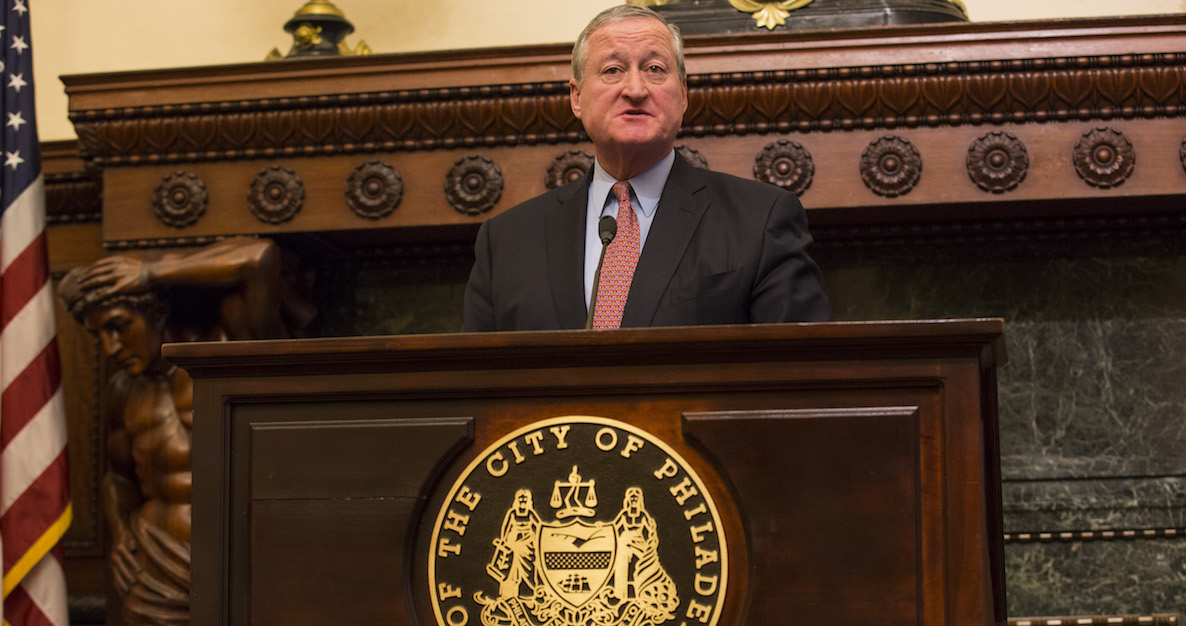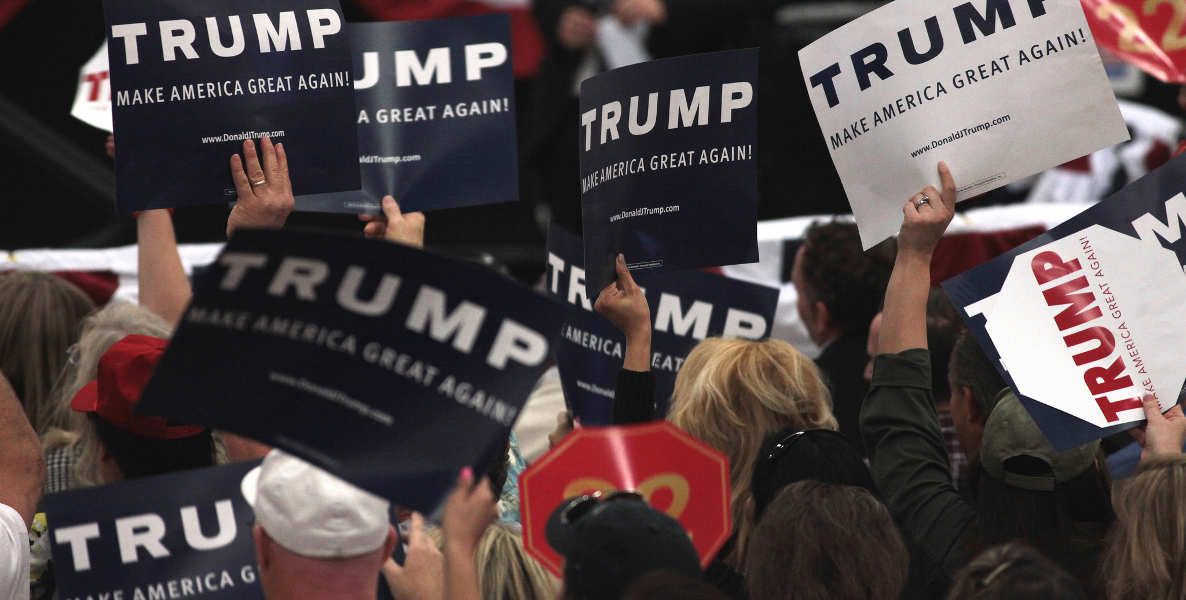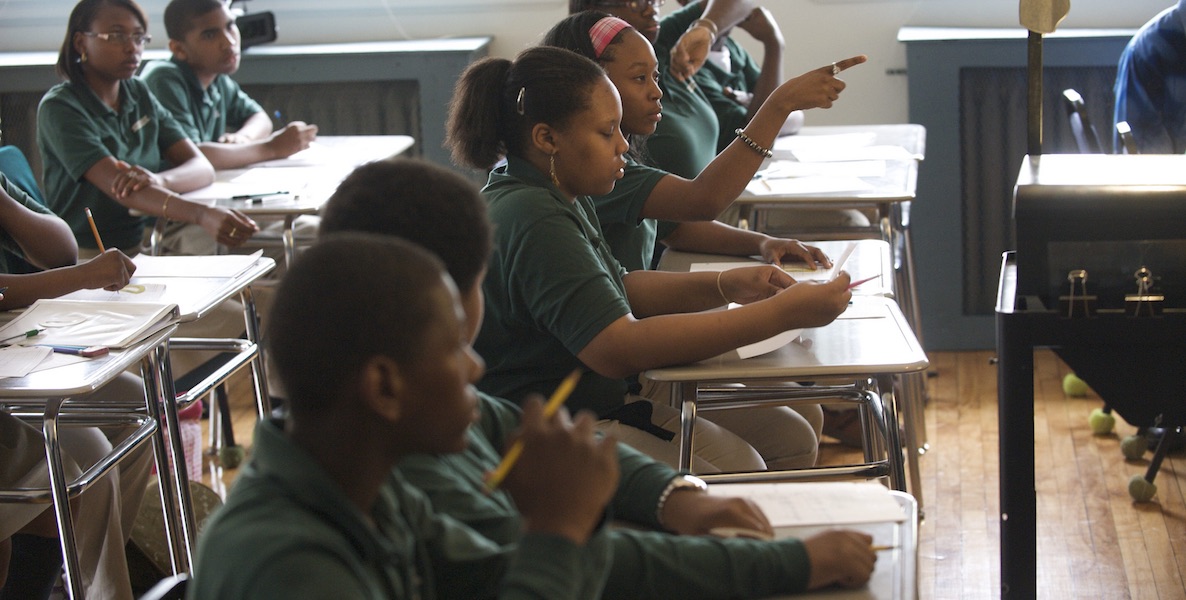Let’s begin with the obvious: From the perspective of rewarding his base, Donald Trump owes little to cities. After all, his winning electoral numbers were overwhelmingly rural, small town industrial belt, and exurban.
But while the majority of hand-wringing these past two weeks has been from Democrats wondering how they lost the Midwest, there is another subtext to the election that warrants introspection: The cities and metropolitan regions that voted Democratic are increasingly the major generators of economic value and population in America. So if Republicans want to convert 2016 into a longer-term triumph they too have lots of work to do.
Trump has two domestic political challenges: (1) How to reward his base and (2) how to broaden his base. While those problems are common political fare, for Trump the task is especially difficult. Here are the two central policy and political problems facing the president-elect:
The first problem: How to reverse the rural, small town, and industrial belt decline so evident during the past four decades? It will require confronting forces decades in the making. The reasons for such decline are many: trade, globalization, technological change, the dominance of agribusiness, energy policy, and the advantages of urban agglomeration. Without going into detail in each area, suffice it to say there are no simple solutions.
If the Republicans want to convert a narrow electoral win of 107,000 votes in three swing states—Pennsylvania, Michigan, and Wisconsin—and a popular vote loss of 2 million votes into a governing majority, they will focus on the very Metros that voted so heavily against them.
The second problem: How to broaden the base? That is, how can Trump pick up voters in the politically moderate suburban collar of major cities, and pick up some support in cities? This can only happen if Trump is able to demonstrate that he is not a threat to ethnic and cultural diversity—the lifeblood of cities—and that he can proffer urban policies that benefit traditional Democratic constituencies along with moderate Republicans and Independents.
In this and subsequent columns, I will look at the prospects for Trump urban policy. If the Republicans want to convert a narrow electoral win of 107,000 votes in three swing states—Pennsylvania, Michigan, and Wisconsin—and a popular vote loss of 2 million votes into a governing majority, they will focus on the very metros that voted so heavily against them. This means that policies have to be viewed from two perspectives: Are they effective in accomplishing intended outcomes? And: Do they make political sense, in that they maintain and broaden popularity? Needless to say, being effective and popular are not always the same, especially in the short-term.
In this column I will dive into urban education policy. In following columns, we’ll analyze Trump’s prospects—and ours—from the perspectives of law enforcement, housing policy, and infrastructure.
The Next Urban School Battle
Trump’s most explicit campaign references to cities were directed to inner cities, described in dystopian terms as places of chaos and violence. His plea was give me a chance; you have nothing to lose. He did not receive many inner city votes, although turnout numbers for Clinton were lower than for Obama.
Trump’s message to inner cities focused on fixing schools through school choice and law and order. The choice of Betsy DeVos as education secretary reinforces Trump’s school choice agenda. DeVos chairs the American Federation for Children, the largest school choice advocacy group in the nation. She is a controversial hire and we can assume Senate hearings will be animated.
School choice generally refers to vouchers for low-income children to attend private schools (scholarships); tax credits for contributions to private schools that provide assistance to low-income children; or charter schools, which are public schools that are managed privately. Trump has been explicit about his support for vouchers, something that DeVos has championed.
Like so much else in the Trump campaign, railing against Common Core was red meat for his voters but had little substantive meaning. Common Core reading and math standards were developed at the federal level but are best viewed as a state-led opt-in system more than a national mandate.
DeVos may have problems not only from the left but from the political center as she appears to be out of step with many charter school advocates in cities where charters often represent 30 percent or more of student enrollment. For one thing, she has supported for-profit charters in Michigan, while the overwhelming majority of charters are run by nonprofits with an explicitly public purpose.
Second, she has not always seemed to prioritize quality over choice. There is a chasm within the charter world between those who view choice as the road to quality and those who view quality as an intentional practice and not a natural byproduct of choice. DeVos’ view that choice leads inexorably to quality is a more libertarian view than is found among most school reformers.
Most high quality charter operators are happy to see poorly performing charters challenged or even shut down. They value the relative autonomy of charters, which they claim as necessary to enable stronger performance. But they know that autonomy alone does not ensure performance. Moreover, they view the credibility of the charter movement as linked to the capacity to perform and innovate.
Flexibility in exchange for accountability was the original bargain that created charters, first in Minnesota in 1992. Since then 42 states and the District of Columbia have adopted charter laws, and currently there are almost 3 million children attending charters in the United States, a steadily escalating number. Charters are a fact of life in American cities.
DeVos will have problems if her department makes cuts to fund the voucher program, especially if cuts come from Title I funding, which supports high poverty schools. It is noteworthy how quickly groups like Democrats for Education Reform (DFER), a centrist pro charter voice within the Democratic Party, distanced themselves from those ideas.
The DeVos selection upset liberals and some conservatives. The former view her appointment as an attack on traditional public education systems and the latter as giving aid and comfort to Common Core standards. Liberals are correct: She represents a radical counter to traditional public education systems. As far as national standards, she will easily fudge her position to suit campaign rhetoric. She has already begun to do so, yet some conservatives are nervous about her Common Core perspective.
Like so much else in the Trump campaign, railing against Common Core was red meat for his voters but had little substantive meaning. Common Core reading and math standards were developed at the federal level but are best viewed as a state-led opt-in system more than a national mandate. And states have adapted standards to suit their purposes and context. If you get rid of Common Core tomorrow, states will still be free to create standards and use the power of their purse to enforce them.
National campaign rhetoric commonly projects a view of the federal government as a bureaucratic goliath that determines standards and overrides local control. In fact the K-12 education system in the United States is heavily derived from the combined effect of local school boards, state school codes, teacher union contracts, and education training programs at universities.
Trump’s pick for education secretary has not always seemed to prioritize quality over choice. Betsy DeVos’ view that choice leads inexorably to quality is a more libertarian view than is found among most school reformers. They know that autonomy alone does not ensure performance.
The federal government represents a very small amount of funding for K-12 schools—slightly less than 10 percent. The majority of money comes from local and state sources. The federal government is, however, a standard setter, research analyst, guardian of civil rights, and funder for high poverty districts (a role that harkens back to the 1960s), including the school lunch program.
A large-scale federal voucher program (Trump uses $20 billion as the figure) could go directly to schools and/or only work with states or districts if there are supportive voucher, tax credit, or charter programs. In this sense, it would function like the Obama Administration’s Race to the Top, creating eligibility guidelines that ensure certain reforms or practices are in place if you want to opt-in. Making individual schools or smaller networks of schools the drivers of change (rather than large school systems) has been one of the themes of the charter movement and a voucher program would likely reinforce that philosophy. In that sense it could be a disruptive influence to current education systems.
Could it succeed as policy? Said differently, would children benefit from it? A national voucher program would build on a body of practice in dozens of states and localities and across the globe that have experimented with vouchers. It should recognize the research that has been carried out on the subject. Some of it has shown very limited effects and even some negative impact. Other studies, like a recent meta-analysis of high quality studies across the globe, notes widespread voucher success.
Would a voucher program—whether it was successful as policy or not—help to garner more support for the Trump administration? A new voucher program could strengthen parochial and private schools that serve low-income children, which may in turn build some support. Surveys always show that there are a substantial number of low and moderate-income parents who favor charters and vouchers.
But does that mean Trump education policies will crack the code of the Democratic Party alignment between the public school status quo, teachers unions and urban voters? I doubt it. First, any attempt to empty Title I resources will not be popular. Second, voting for president is rarely a single-issue event.
A new round of school battles will emerge from the 2016 election. As you can see, it will be far more complex than suggested by the rhetoric of the campaign.
In the next column, we’ll look at the area of law enforcement through an urban policy lens, with an eye toward trying to figure out how cities can make our way in Trump’s America.







